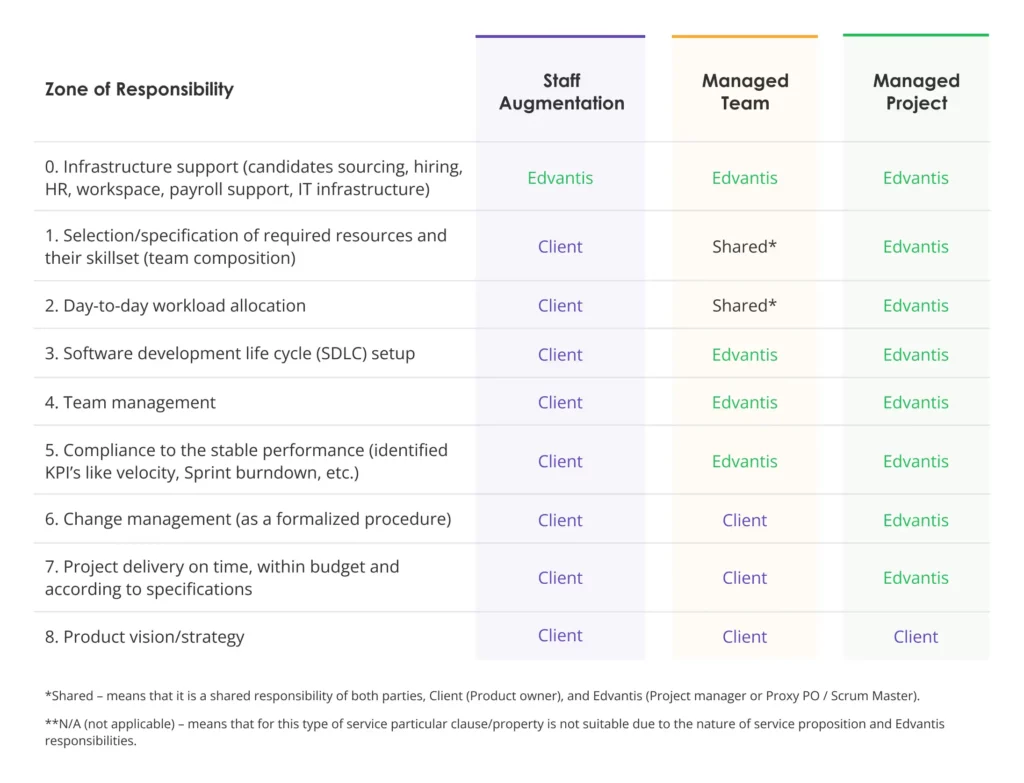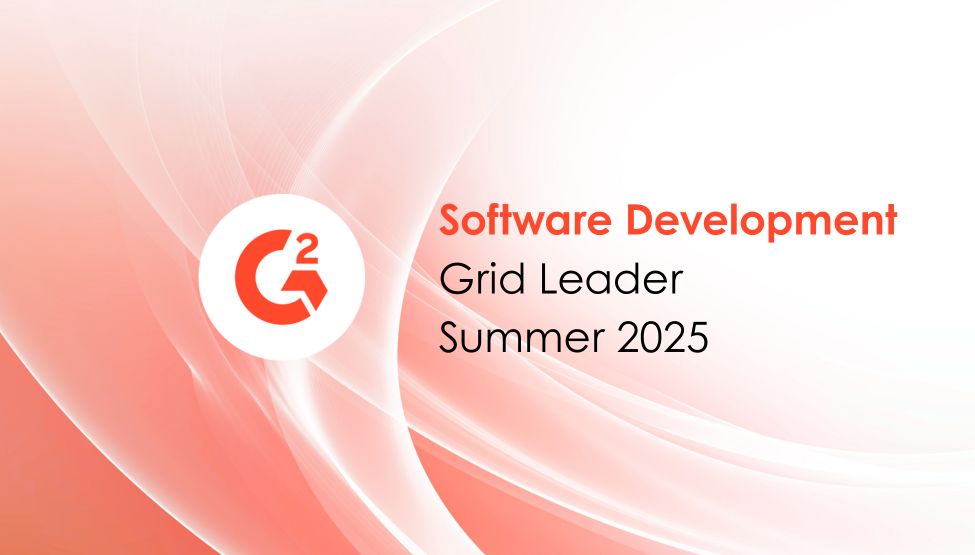
Growing your retail business, adopting new channels, and expanding to new markets might require more tech expertise than you currently have. Perhaps you want to switch to headless operations, integrate a new payment provider, or boost on-site search with AI-driven autocomplete.
BigCommerce provides robust core commerce features and high-performing cloud architecture out of the box. As an Open SaaS platform, it also allows a wide degree of customization. But you will need a technology partner to do the development work.
How do you choose a reliable vendor to help with BigCommerce store development? This post offers a detailed walkthrough.
How to Select a BigCommerce Development Partner
Vendor selection is a complex process. When coming unprepared, you risk trying to “build the brick house while having wooden sticks,” aka end up with someone unable to meet your expectations.
The best option is to work with a BigCommerce-certified company. A BigCommerce-endorsed vendor has:
- Experience: They understand platform architecture and know its limitations and strengths.
- Support: BigCommerce offers training and resources to BigCommerce-certified companies.
- Reliability: BigCommerce verifies its credentials and capabilities to deliver high service levels.
Ideally, your goal is to identify a vendor that offers transparent service terms, communicates with integrity, and can help establish a successful collaboration process. And here’s how you can select the right technology partner.
1. Establish Initial Project Scope
Let’s start with the basics: What’s your project roadmap? Entering the vendor selection process with a clear end vision and project scope is a must-do step for establishing effective collaboration.
Specifically, you should prepare:
- General project overview. Define your vision, goals, and objectives. What’s your rationale for starting this project?
- Expected scope of work. Outline the deliverables, technical project requirements, and preliminary project timelines.
2. Evaluate Your Operational Readiness for Tech Partnerships
When you work with a software development vendor, you don’t just delegate technical work, then kick back and relax. Different collaboration frameworks and IT service models assume a varying degree of your involvement — e.g., product backlog planning, project management, direct supervision, feedbacking, etc.
So, before approaching a software vendor, you need to determine if you’re operationally ready for outsourcing.
As a part of checking your readiness, make sure you:
- Envision how outsourcing fits into your overall IT strategy
- Have a process to escalate bottom-up issues and communicate downstream changes
- Have a plan to onboard new team members and share knowledge with them
- Understand the cost of software licensing, subscriptions, and additional tools required for new members
Read more about verifying your readiness for IT outsourcing.
3. Holistically Assess Vendors Against Set Criteria
You have a preliminary scope of work and an operational game plan for collaboration. Shortlisting vendors is the next step.
Consider the following criteria when narrowing your list of candidates:
Additionally, you may apply other vendor evaluation criteria such as the location of the company’s development center, project management approaches, certifications, or even its social responsibility practices.
There is little chance a vendor will meet all your selection criteria, so choose the closest fit.
After all, the most established vendor on the market is not necessarily the best option for your business. To select the optimal fit, create a prioritized list of evaluation criteria. Then, consider areas where you can compromise.
The collaboration process begins once you have narrowed your list to one vendor.
Engagement Process: Establishing a Partnership With the Selected Vendor
IT outsourcing is a semi-structured, collaborative process. As such, there’s no universal “best practice” for brokering a successful partnership.
Thus, software vendors often use different definitions and have different engagement process positioning. Edvantis, for example, defines the engagement process as a set of steps from when a client contacts us to when we countersign the contract.
What comes next is delivery — a separate stage. However, there are instances when other companies may refer to delivery as part of the engagement process.
One thing remains universal in every good engagement process: thorough discussions, formalization of the detailed scope of work, and document countersignatures.
In other words, if your vendor wants to jump into work without going through all these steps, you’ll end up with hidden costs and a hard-to-manage workflow.
Here’s how we handle new BigCommerce software development projects at Edvantis.
1. Pre-Engagement Discussions
During the initial contact, we usually review the project details and collect extra data (if needed). To capture the essence of your project, we require the following information from our clients:
- Project vision: a summary of what needs to be done (i.e., new software development, data migration, front-end redesign)
- Project goals: what you try to achieve(e.g., integrate a new payment processor, deploy a new big data analytics engine for sales forecasting, etc.).
- Technical requirements: production environment specifications, coding standards, etc.
- Expected scope of work: project deliverables, limitations, expectations, team size, etc.
At this point, we encourage clients to sign NDAs to feel secure and comfortable when sharing information. Also, if you are new to IT outsourcing, you may request a workshop where we will answer different operational, organizational, and risk management questions.
2. Preliminary Proposal
Using the information gathered and analyzed during the previous stage, we can create a preliminary project proposal that includes:
- The anticipated scope of work
- Recommended service model(s)
- Timelines and budgets for the project
- Recommended team size and composition
That said, a preliminary proposal changed since it’s a blueprint of the future formal proposal. This document is an attempt to structure and organize information so that our subsequent discussions are more efficient.
Before submitting a proposal, we can also propose an optional discovery stage.
Discovery facilitates structured discussions around your project’s vision, goals, and requirements. Its goal is to:
- Help you formalize the project scope.
- Identify optimal team composition and tech stack.
- Prepare for risks and bottlenecks.
- Create a project development roadmap.
3. Formal Proposal
Once we achieve alignment with your project vision, we pack all project details into a formal business proposal. Commercial proposals typically include:
- Executive summary
- Problem statement and solution
- Scope of work
- Team composition
- Assumptions and limitations
- List of deliverables
- Project schedule
- Billing information and payment schedule
- The acceptance (project sign-off)
In contrast to a preliminary proposal, a formal proposal outlines more specific collaboration conditions. It indicates the readiness to formalize our collaboration by countersigning IT service contracts: Master Service Agreements (MSAs) and Statements of Work (SoWs).
4. Engagement Kick-Off
Once the papers are signed, we officially put our partnership in motion and can prepare for onboarding. Namely, we expect you to
- Appoint the primary project lead and point of contact at your company.
- Establish the timeline for status updates, check-ins, and demos, and describe communication procedures.
- Prepare all tools, code repositories, IDEs, and tech documentation for our Software Developers/teams.
- Make a quick presentation about your project coding standards, quality measures, Definition of Ready (DoR), and definition of done (DoD).
Once you do the above, the actual ecommerce development work begins.
Edvantis & BigCommerce Playbook: Your Framework for Effective Tech Partnerships
Co-Creation: Expectations From You and Your Vendor
Sharing responsibility is the essence of partnership. As a client, you may also need to contribute to the development part of the project with feedback, requirements refinement, or even management and task allocation within some service models.
The service model determines the scope of responsibilities you and the vendor have. At Edvantis, there are three service models:
- Staff Augmentation: We provide you with specialists recruited based on your requirements and ensure administrative support.
- Dedicated Team: We set up a cross-functional team and co-manage it with you.
- Fixed-price Project: We manage the project and team while you provide feedback and requirements.
Here’s the breakdown of responsibilities for each service:

What Comes After the Project Closure?
Once the project is complete, we deploy the changes to production and evaluate the final results. Yet, the project closure does not necessarily mean the end of our partnership. Two other scenarios are possible.
Scenario 1: We renew the partnership for the new project on updated conditions
You initiate either a continuation of the previous project (e.g., operations services) or an entirely new one (new feature development). We will then adjust the team size, create a new scope of work document — and restart our engagement.
Scenario 2: We switch to maintenance mode
A smaller Edvantis team stays on to maintain the operations of your developed solution (provide technical support, perform troubleshooting, complete ongoing minor tasks, etc.). We can gradually scale up the team if you need Edvantis again on a future project.
Final Thoughts
Choosing a technology partner isn’t easy, but it’s worth the effort. With the right vendor, you will get relevant expertise, service models that match your strategy, and a well-structured engagement process.
Now that you understand how IT outsourcing partnerships work, choosing the right technology partner should be manageable. Should you wish for more information, we have a playbook that will satisfy your curiosity.
Ecommerce businesses can find all details on partnering with IT outsourcing companies in our playbook, created in partnership with BigCommerce.






